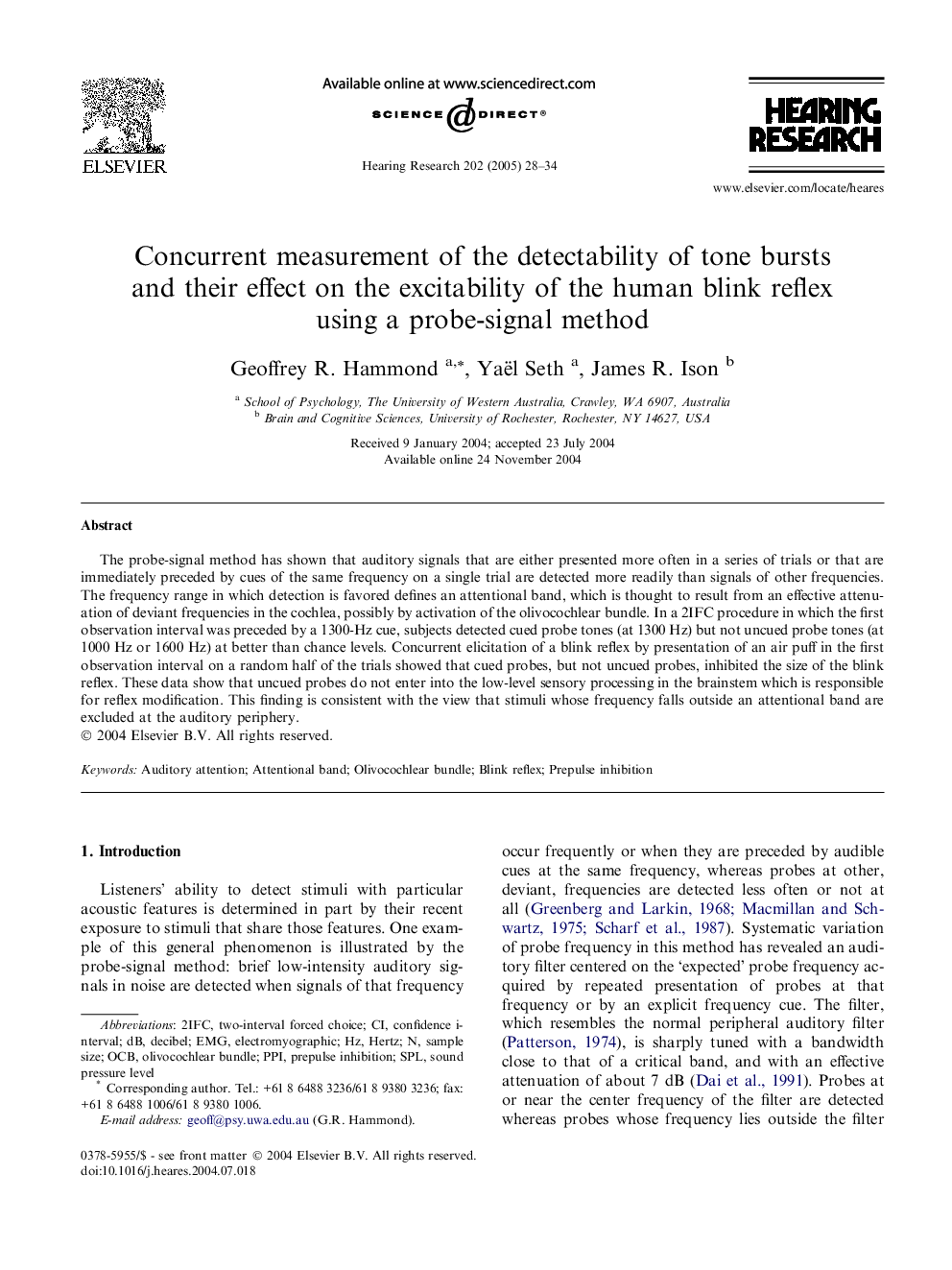| Article ID | Journal | Published Year | Pages | File Type |
|---|---|---|---|---|
| 9436561 | Hearing Research | 2005 | 7 Pages |
Abstract
The probe-signal method has shown that auditory signals that are either presented more often in a series of trials or that are immediately preceded by cues of the same frequency on a single trial are detected more readily than signals of other frequencies. The frequency range in which detection is favored defines an attentional band, which is thought to result from an effective attenuation of deviant frequencies in the cochlea, possibly by activation of the olivocochlear bundle. In a 2IFC procedure in which the first observation interval was preceded by a 1300-Hz cue, subjects detected cued probe tones (at 1300 Hz) but not uncued probe tones (at 1000 Hz or 1600 Hz) at better than chance levels. Concurrent elicitation of a blink reflex by presentation of an air puff in the first observation interval on a random half of the trials showed that cued probes, but not uncued probes, inhibited the size of the blink reflex. These data show that uncued probes do not enter into the low-level sensory processing in the brainstem which is responsible for reflex modification. This finding is consistent with the view that stimuli whose frequency falls outside an attentional band are excluded at the auditory periphery.
Keywords
Related Topics
Life Sciences
Neuroscience
Sensory Systems
Authors
Geoffrey R. Hammond, Yaël Seth, James R. Ison,
